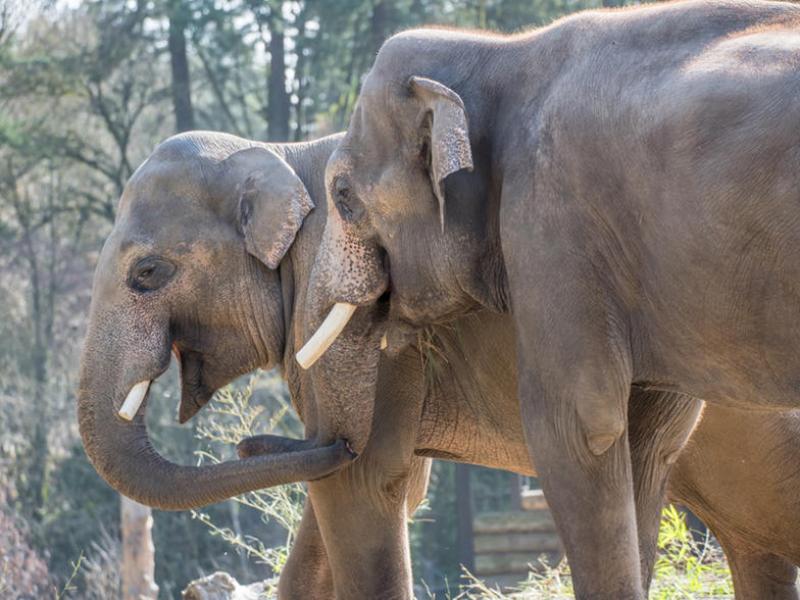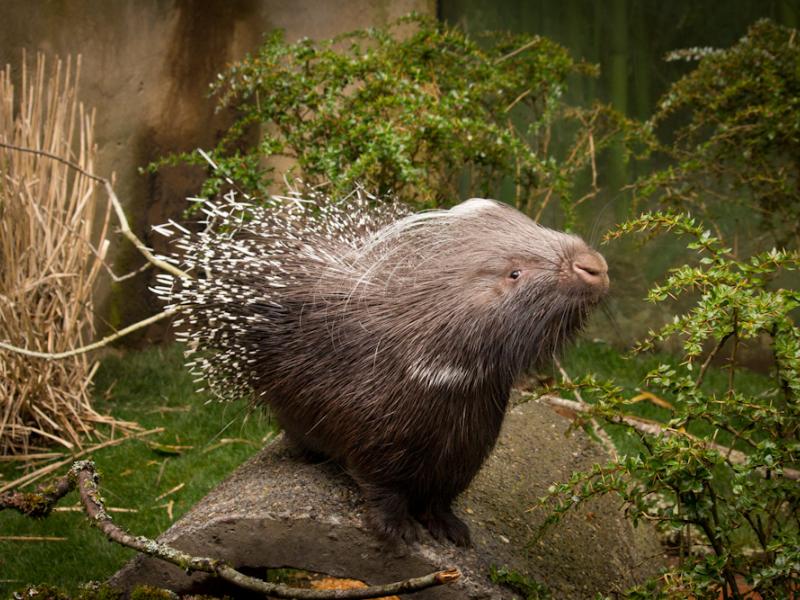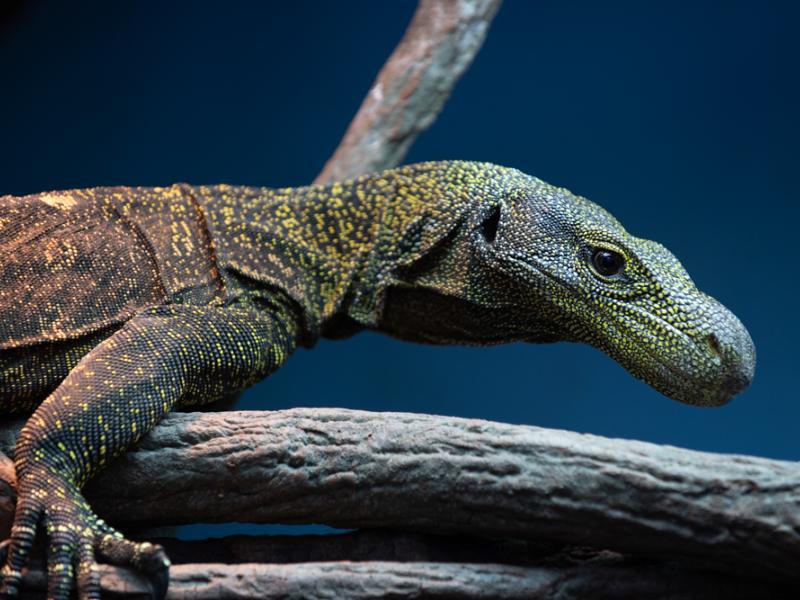
Red pandas are a small arboreal mammal found in the montane forests of the Himalayas and major mountain ranges of southwestern China (Nepal, India, Bhutan, China and Myanmar). These strange carnivores have formidable teeth and a pseudo thumb that they use to consume a diet of mostly bamboo. Their striking red, white and black fur helps them to camouflage in the shadowed nooks of the trees amongst reddish moss and white lichens.
There are two recognized species. Himalayan red pandas, ailurus fulgens (at the Oregon Zoo) are found in the western range (India, Nepal, Myanmar) and are smaller with lighter fur. Chinese red pandas, ailurus styani, are found in the eastern range (China) and are larger with darker fur.
The life of a red panda
Red pandas are great climbers that spend most of their time in the trees, assisted by flexible ankles, semi-retractable claws, and a long tail. Even though they come from a long line of carnivores and still retain their carnivore teeth and stomachs, they eat a diet made up of mostly bamboo leaves. To cope with this lower quality diet, they eat only the most nutritious, tender leaves and can actually become dormant, lowering their metabolic rate for short spells to conserve energy. Red pandas are often solitary in their native habitat but will come together to breed once they reach about 18 months of age. They typically have a litter of one or two, but sometimes up to four, cubs. Cubs stick with their mother until they are full grown at about one year old. Red pandas start to show their age around 10-12 years old but have been known to live beyond 20 years.
Red panda conservation
Red pandas are an endangered species with populations declining by about 50% in the last 20 years. While exact numbers are uncertain, there could be as few as 2,500 of these magnificent creatures out there. Habitat loss and fragmentation are the top threats to these animals with human growth and development, timber harvest, and livestock grazing all major contributors. Poaching and wildlife trade are also a concern.
There are many strong local efforts to help red pandas including:
- Forest Guardians – local people trained to monitor populations, protect habitat, educate fellow community members, and assist with anti-poaching efforts (e.g., patrolling habitats, removing traps, reporting poaching activity to officials, educating community)
- Ecotourism to support local economies
- Bio-briquette production to offer a more sustainable fuel source for local people
- Improved cookstoves to reduce fuel needs from the forests
How you can help red pandas
You can help by purchasing products certified by the Forest Stewardship Council to ensure your paper and wood products are sustainably harvested in ways that benefit both forests and people.
Red pandas at the Oregon Zoo
Located near Discovery Plaza.




